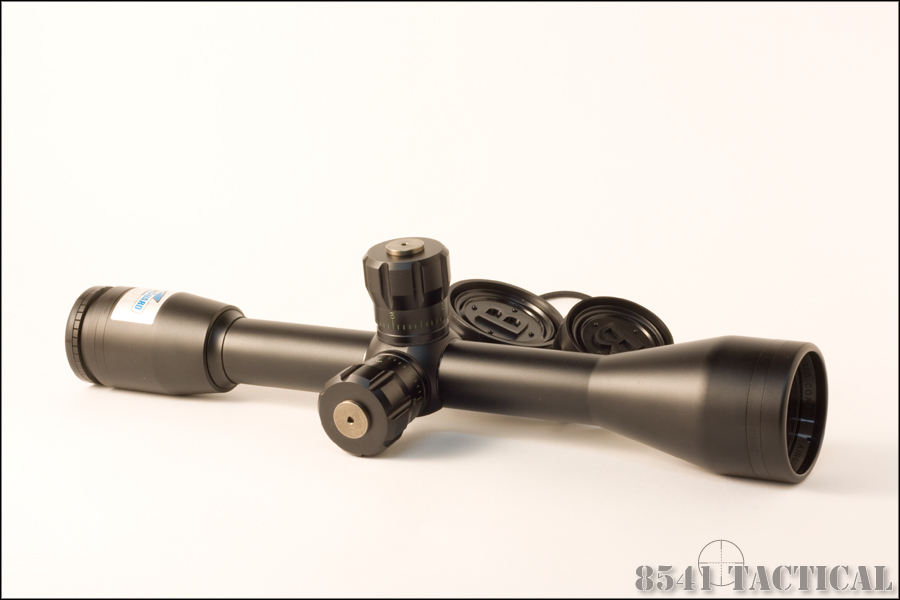The first choice we had to make was what magnification range to go with.
If you walk up and down the firing line at any major competition, you will be hard pressed to find a fixed power scope present. Not many LE Snipers use them if they have any choice. A fixed power scope pins you down to one magnification, one field of view and limits your options.
While a fixed power scope has a multitude of drawbacks, it also has several very large strengths. A fixed power scope has fewer moving parts. No magnification selector is needed, this eliminates several additional seals. The lens elements do not need to move forward and back. They can stay fixed with the exception of the erector assembly (the part that allows you to adjust the reticle). All those extra parts cost money and require precision to assemble. When you eliminate them and keep the budget the same, you can now direct that money at other areas of concern.
When the topic of fixed power comes up, new shooters are often worried about having enough magnification for the task. Very frequently they want to err on the side of too much magnification. I caution against this. While a 17x scope may be better for shooting sub-10" targets at 1000 yards, you will quickly find problems when you need to shoot a moving target at 500 yards. You will also have issues when the mirage is up.
My recommendation for a fixed scope is to stick with ten power magnification. 10x is enough for shooting from 100 to 1000 yards. The field of view is large enough for moving targets. It has proven successful for Marine Corps and Army Snipers for some time. A 10x scope isn't likely to win many bench rest competitions, but for field shooting it's sufficient.
 |
When looking at the budget 10x scope offerings, the Bushnell Elite 3200 10x40 was the winner. The glass is extremely clear and blows away every other scope I have looked through in this price range. The scope tracks accurately and is equipped with a standard Mildot reticle. It is available in both standard 1/4 MOA click turrets or 0.1 mRad turrets. This is an extremely inexpensive way to get into a mil/mil, matching turret and reticle system.
Many shooters are going to be tempted to go with one of the "cheap" high magnification variable power "tactical" scopes on the market. Don't do it! |
Every other week I have someone come up to me at the range to show me one of these lovely scopes. The problem is most of these shooters have no frame of reference. They think they got a deal because their scope looks similar to the $2,000.00 Razor HD sitting on my AI, but only cost them $150.00. Usually the shooter who bought it was dazzled with the look and features on the box. He has never actually checked the tracking, and when it doesn't hold zero he just figures the box of ammo was bad or that's all the rifle is capable of. He enjoys the scope so he tells everyone about it. These are the same folks who will violently defend "their" scope on the internet forums.
Don't be wowed by the features or the "tactical look". A rifle scope is worthless if it doesn't track correctly or hold zero.
There are a coupe of other scopes in this same price range that get good reviews from other shooters. The SWFA Super Sniper 10x is one. I don't feel that the glass is as clear and the turrets do not feel as good. The Weaver Tactical 3-10x40 is another option, but we have not tested this scope. We hope to do so in the future. |
 |
For some more reading on selecting scope magnification, please read our previous article:
Magnification: How much or how little? |


